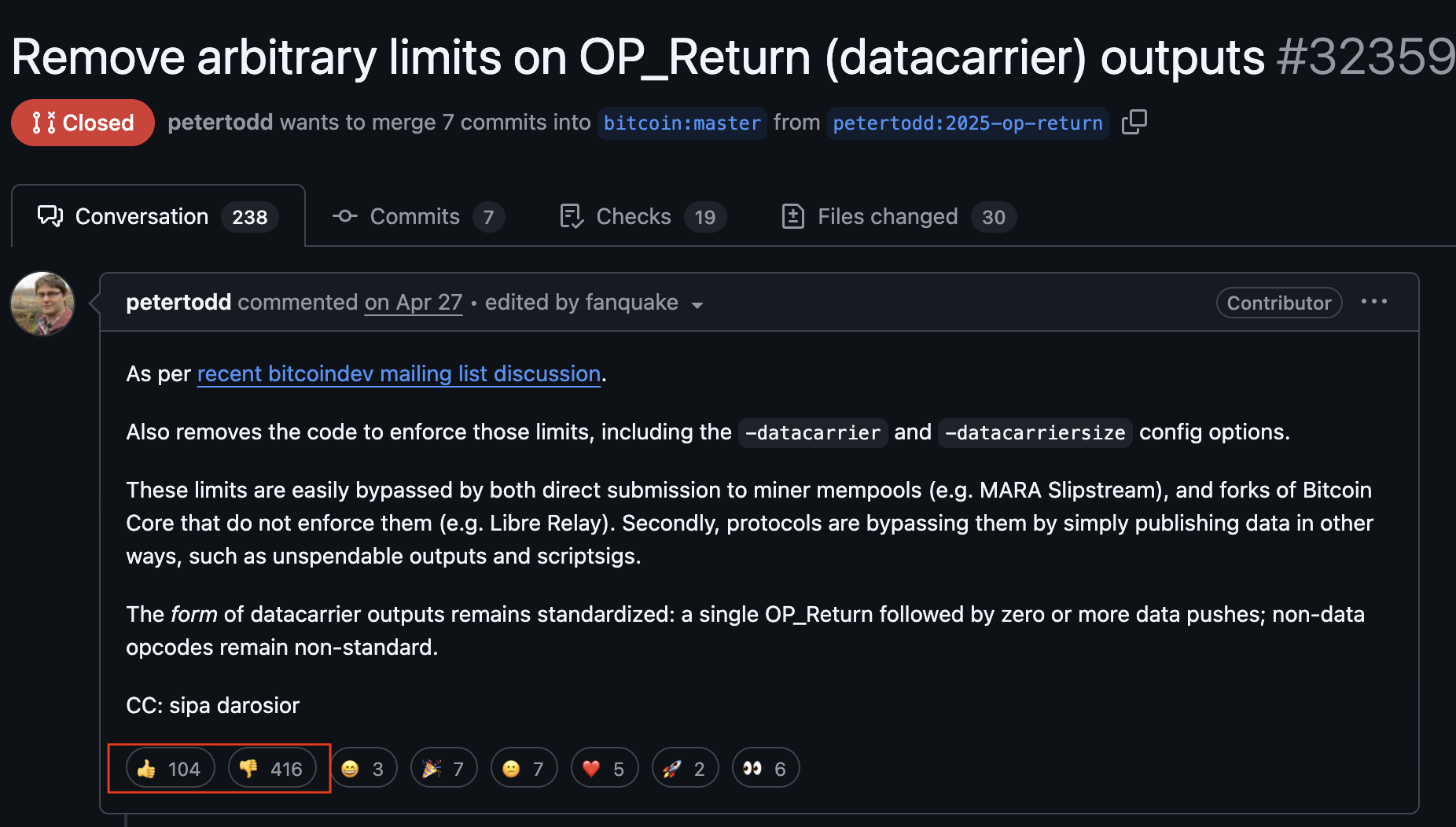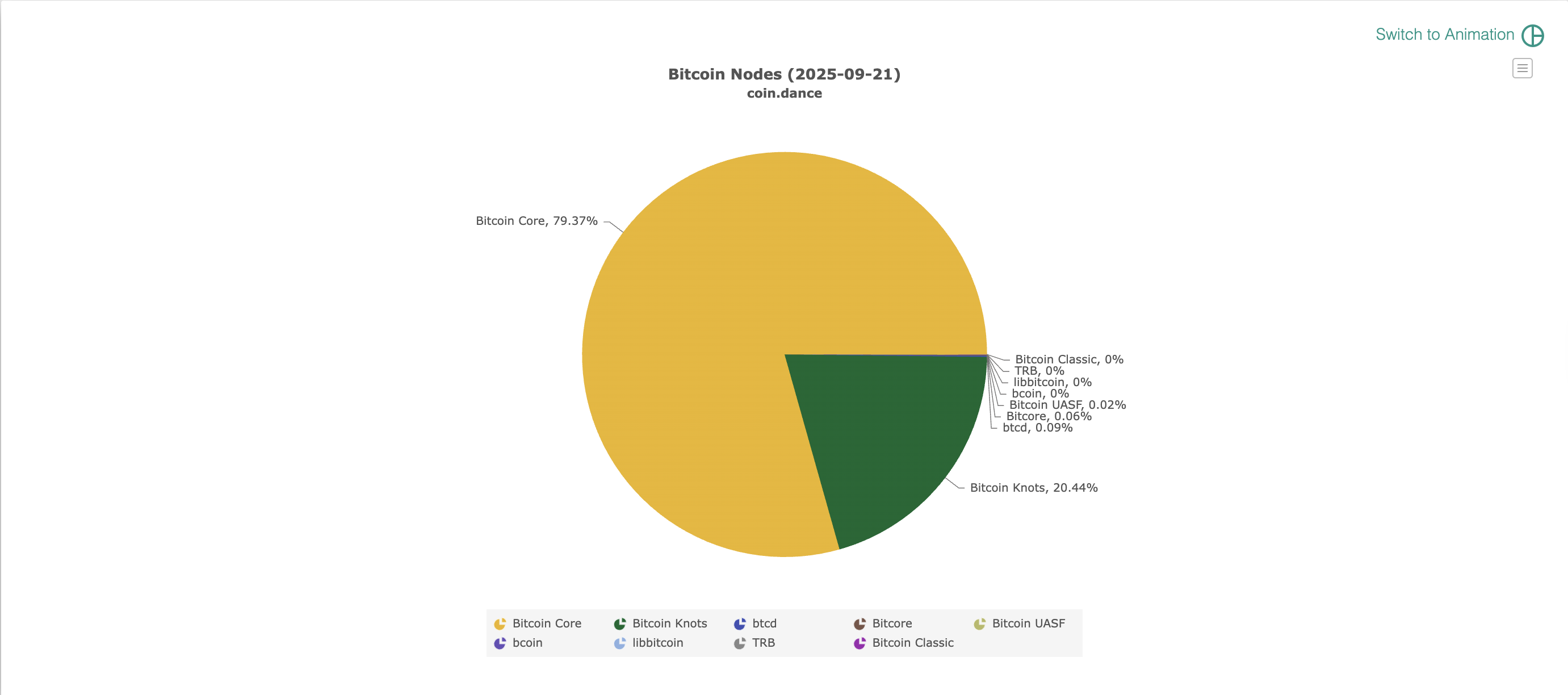The OP_Return limit removal in Bitcoin Core 30 allows larger non-monetary data on-chain and has sparked widespread community backlash, driving many node runners to Bitcoin Knots to enforce stricter data limits and protect decentralization concerns.
-
OP_Return limit removal in Bitcoin Core 30 has triggered a surge in node migrations to Bitcoin Knots.
-
Node runners report Bitcoin Knots now accounts for ~20% of nodes versus ~1% in 2024.
-
Bitcoin ledger size ~680 GB since 2009; critics warn larger OP_Return entries may accelerate growth and centralization.
OP_Return limit change: Bitcoin Core 30 sparks node exodus—read expert analysis, community reaction, and steps node runners take. Learn what this means for decentralization now.
What is the OP_Return limit change in Bitcoin Core 30?
The OP_Return limit change in Bitcoin Core 30 removes the fixed 80-byte restriction for non-monetary data, allowing larger arbitrary data to be embedded on-chain. This decision has provoked strong criticism from developers and node runners concerned about long-term ledger growth and decentralization.
Why are developers and advocates divided over the OP_Return change?
Jimmy Song and other critics argue the change treats non-monetary data as acceptable “spam” and disregards the practical impact on node storage and bandwidth.
Proponents counter that defining “spam” is ambiguous and limits can be overly restrictive. The debate echoes the block size wars and centers on design philosophy: strict monetary-only constraints versus permissive data use.
Song accused BTC Core developers of defecting and failing to address widespread community concerns about non-monetary data on the ledger.
Jimmy Song, a Bitcoin developer and advocate, criticized Bitcoin Core developers for removing the OP_Return 80-byte limit in the Bitcoin Core 30 upgrade, calling the rationale “fiat” mentality and accusing maintainers of deflecting community concerns.
Song said: “The idea that spam is difficult to define, and because of this ambiguity, we shouldn’t be making any distinctions at all in the software, is a time-wasting argument from fiat politics where you pretend not to know the obvious, so the actual debate can never get off the ground — the non-monetary uses of Bitcoin are spam. You can argue whether that’s something desirable or not, but saying you can’t define it is a stalling tactic meant to avoid the real argument about actual impact — particularly, the long-term impact of this change.”

How have node runners responded to the OP_Return decision?
Node runners have voted with their feet, moving en masse to Bitcoin Knots, an alternative node implementation that enables stricter enforcement of on-chain data limits.
Bitcoin Knots now represents about 20% of nodes, up from roughly 1% in 2024, a near-vertical rise in nine months based on public node software telemetry reported by community tracking projects (Coin Dance cited as plain text).

Supporters of strict limits say maintaining low storage and bandwidth requirements—Bitcoin’s full ledger is ~680 GB since 2009—keeps node operation affordable (~$300 retail hardware) and preserves decentralization.
Higher-throughput chains and smart-contract platforms often require specialized hardware costing tens of thousands of dollars, which critics say concentrates power among wealthy operators and risks centralization.
When could this debate affect Bitcoin’s future security and decentralization?
Long-term ledger growth driven by larger OP_Return entries could raise storage and bandwidth costs, potentially reducing the number of individual nodes and increasing centralization risk over years.
Historical precedent: the block size wars (2015–2017) led to a hard fork (Bitcoin Cash), showing that persistent consensus disputes can produce protocol splits.
Frequently Asked Questions
How will larger OP_Return entries affect node hardware requirements?
Larger OP_Return entries increase total ledger size and bandwidth per block. Over time this may raise storage and sync costs, potentially making node operation less accessible on low-cost consumer hardware.
Can node software choices preserve decentralization?
Yes. Implementations like Bitcoin Knots enable node operators to set stricter policies, helping preserve low resource requirements and broader participation in network validation.
Key Takeaways
- OP_Return change is consequential: removes the 80-byte limit and permits larger on-chain non-monetary data.
- Node migration is substantial: Bitcoin Knots adoption rose sharply to ~20% as operators seek stricter limits.
- Decentralization risk: increased ledger growth could raise hardware costs and centralization pressure; operators should monitor storage trends.
Conclusion
The Bitcoin Core 30 decision to remove the OP_Return 80-byte limit has ignited a technical and philosophical debate over the ledger’s purpose and long-term decentralization. Community reactions—node migrations to Bitcoin Knots and public commentary from developers like Jimmy Song—underscore deep divisions. Watch network telemetry and storage trends to assess lasting impact; node operators should review client options and policy settings.
